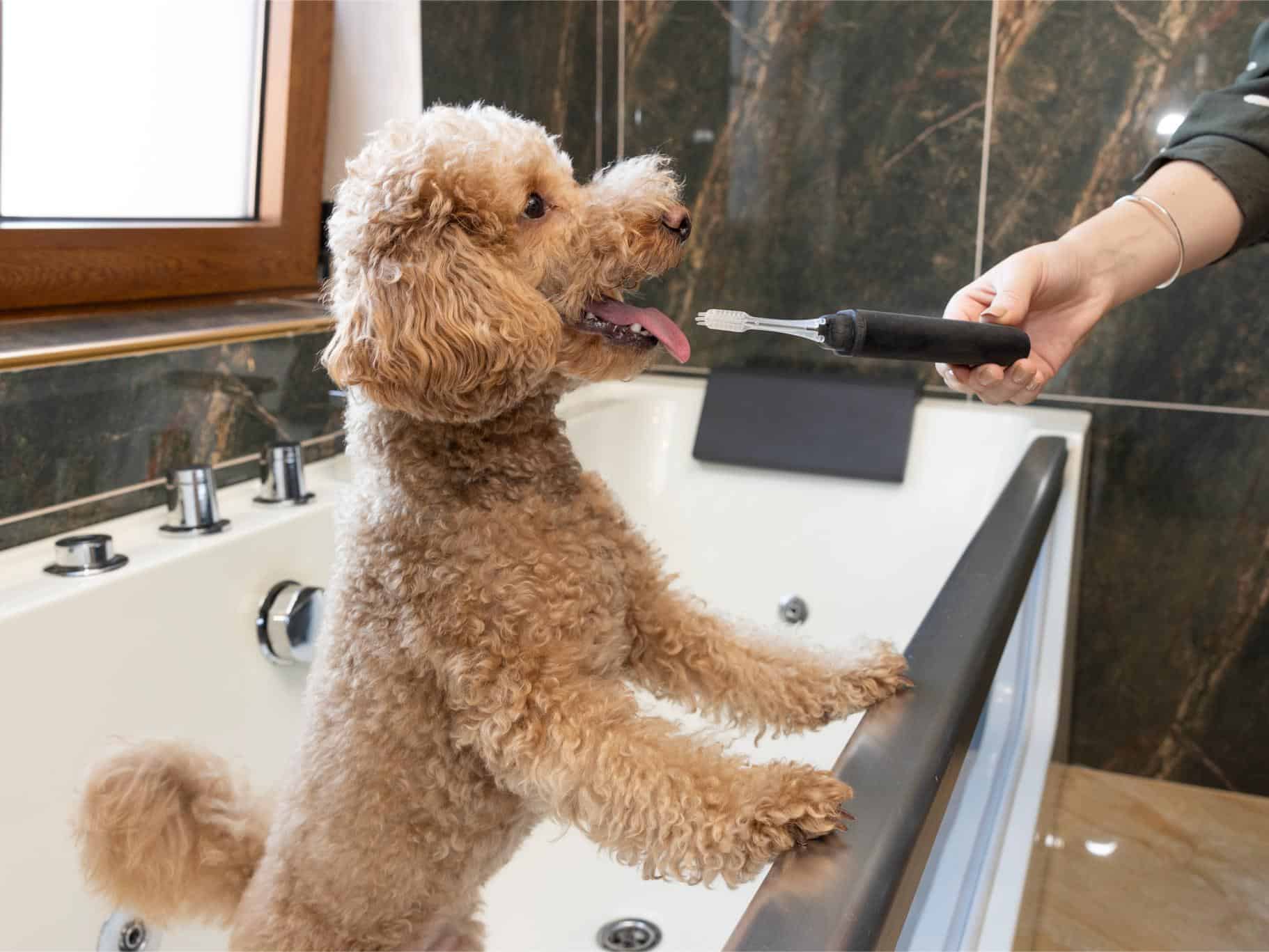Detecting and Addressing Common Pet Dental Issues

Everybody needs occasional reminders. That’s why we have stickers on the windshield stating how many miles before the next oil change, or appointment cards for the eye doctor. In the same way, February provides an important nudge towards pet dental care. Without regular professional cleanings and brushing at home, pets can suffer unnecessarily from common dental issues. In other words, maintaining excellent oral hygiene can entirely prevent pet dental disease.
Part of the Whole
There are many elements that, when aligned, add to a pet’s overall well-being. In addition to balanced nutrition, vaccinations, parasite control, and behavioral support, Pet dental care ranks at the top of the list for preventive care.
When It Gets Real
Dental disease starts when oral bacteria turns into a slimy film (plaque) covering the teeth. Left alone, plaque hardens into tartar. Found primarily on the gum line (especially on the back molars), tartar buildup leads to gum recession. In these growing spaces between the teeth and gums, bacteria proliferates and perpetuates the cycle. Without supportive structures around the teeth, pets can break or lose entire teeth.
The Long View
This is not a quick or pain-free process. The first sign of dental disease is gum inflammation (gingivitis) and bad breath. It can take years for dental disease to progress from swollen, bleeding gums to tooth loss. The takeaway is that with routine attention to their teeth and gums, pets can enjoy long, full lives uncomplicated by dental pain or discomfort.
Why It Matters So Much
Most pet owners dislike a pet’s bad breath. While preventive dental care can certainly inhibit the foul-smelling oral bacteria, and the accumulation of plaque and tartar, the benefits go far beyond simply smelling and looking better.
Common pet dental issues, particularly periodontal, gum, disease have been linked to systemic illness. Oral bacteria can enter the bloodstream and travel to the body’s major organs. Heart disease, kidney disease, and liver disease can be traced directly back to the mouth in many cases.
What to Look For
Recognizing pet dental problems is a crucial first step towards effective treatment. If you notice any of the following signs, please schedule an appointment:
- Red, swollen, or bleeding gums
- Yellow or brown discoloration on the teeth
- Loose, broke, or missing teeth
- Food avoidance
- Dropping food or favoring one side of the mouth
- Nasal discharge
- Sneezing
- Pain
- Excessive salivation
- Crying or uncharacteristic clinginess
- Hiding or social withdrawal
- Any changes to their routine or normal behavior
Other pet dental issues that can arise either in isolation or at the same time as periodontal disease include:
- Tooth resorption
- Stomatitis
- Retained baby teeth
- Jaw fracture
- Oral cancer
- Oral infection
Making Pet Dental Care a Habit
We are happy to discuss the many ways to achieve optimal pet dental health. Some owners find success with a prescription diet, daily brushing, nutritional supplements, water additives, and more. Also, a yearly dental exam and professional cleaning under general anesthesia is the best way to stop periodontal disease in its tracks. Digital X-rays help us understand what’s happening beneath the gum line so that we may design an effective treatment plan.
If you have questions or concerns about your pet’s oral health, please call Rocklin Ranch Veterinary Hospital at (916) 624‑PETS (7387).

